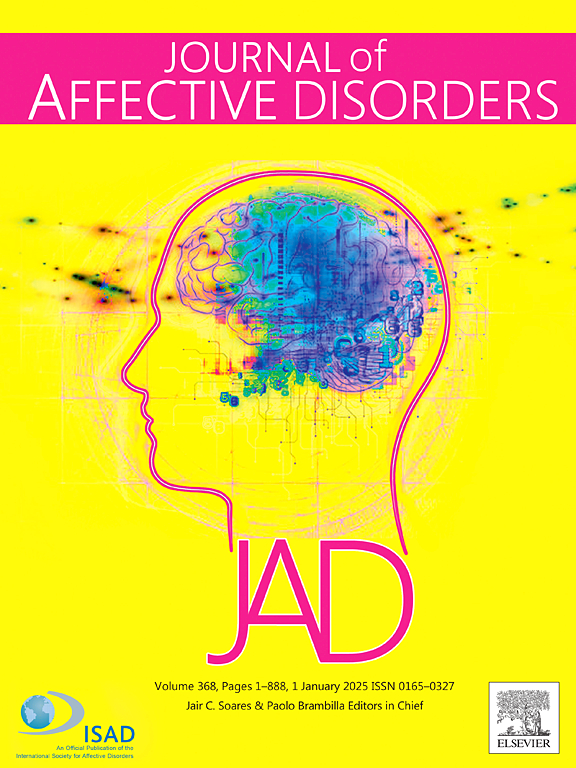Neighborhood experience and hoarding disorder
IF 4.9
2区 医学
Q1 CLINICAL NEUROLOGY
引用次数: 0
Abstract
Hoarding disorder is a relatively common psychiatric condition with a variety of adverse social and individual consequences. People with hoarding report high rates of loneliness and interpersonal dysfunction; however, little is known about how people with hoarding experience and function within their broader social systems (e.g., neighborhoods and communities). Neighborhood experience mediates the effects of one's environment on mental health outcomes, suggesting that it may be relevant to psychiatric disorders such as hoarding disorder that are accompanied by social dysfunction. Using the All of Us Research Program, the present research explores the neighborhood experience of people with hoarding disorder (n = 64), and how it compares to matched participants without a psychiatric diagnosis (n = 634) and to matched participants with obsessive-compulsive disorder (OCD; n = 302). People with hoarding reported significantly higher perceived neighborhood social disorder, neighborhood physical disorder, and everyday discrimination than their matched counterparts. People with hoarding also reported significantly lower perceived neighborhood safety and social cohesion than their matched counterparts. Additionally, perceived daily discrimination was a significant predictor of hoarding disorder relative to participants diagnosed with OCD and control participants. The present results suggest that failure to function within one's broader community may contribute to, result from, and/or be an important treatment target for hoarding disorder.
邻里经历和囤积障碍。
囤积障碍是一种相对常见的精神疾病,具有各种不良的社会和个人后果。囤积症患者报告孤独和人际关系障碍的比例很高;然而,人们对囤积者如何在更广泛的社会系统(例如邻里和社区)中体验和发挥作用知之甚少。邻里经历介导了一个人的环境对心理健康结果的影响,这表明它可能与精神疾病有关,如伴有社交功能障碍的囤积症。利用“我们所有人研究计划”,本研究探索了囤积症患者( = 64)的社区经历,并将其与没有精神病诊断的匹配参与者( = 634)和强迫症(OCD;n = 302)。囤积症患者报告的社区社交障碍、社区身体障碍和日常歧视明显高于与其匹配的人。囤积症患者对社区安全和社会凝聚力的感知也明显低于正常人群。此外,相对于被诊断为强迫症的参与者和对照组参与者,感知到的日常歧视是囤积障碍的重要预测因素。目前的结果表明,无法在更广泛的社区中发挥作用可能是囤积症的原因、结果和/或重要的治疗目标。
本文章由计算机程序翻译,如有差异,请以英文原文为准。
求助全文
约1分钟内获得全文
求助全文
来源期刊

Journal of affective disorders
医学-精神病学
CiteScore
10.90
自引率
6.10%
发文量
1319
审稿时长
9.3 weeks
期刊介绍:
The Journal of Affective Disorders publishes papers concerned with affective disorders in the widest sense: depression, mania, mood spectrum, emotions and personality, anxiety and stress. It is interdisciplinary and aims to bring together different approaches for a diverse readership. Top quality papers will be accepted dealing with any aspect of affective disorders, including neuroimaging, cognitive neurosciences, genetics, molecular biology, experimental and clinical neurosciences, pharmacology, neuroimmunoendocrinology, intervention and treatment trials.
 求助内容:
求助内容: 应助结果提醒方式:
应助结果提醒方式:


